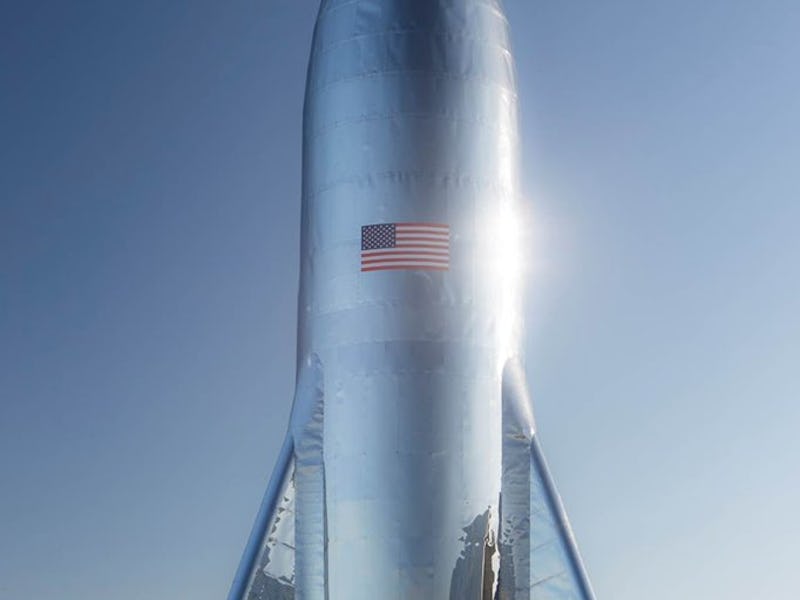SpaceX: Why Elon Musk’s Mars-Bound Starship Hopper Has Been Delayed

SpaceX’s plan to go to Mars has hit a snag, Elon Musk explained Tuesday. The Starship Hopper, a miniaturized version of the vehicle set to take the first humans to the Red Planet, was expected to fly a short distance earlier this year, but the ship has yet to lift off from the ground at the Boca Chica test site in Texas.
“Some challenges with ice formation in the cryogenic propellant prevalves,” Musk wrote on his Twitter page. “Hopefully overcome soon.”
It’s a slight disappointment, as SpaceX originally planned a much tighter schedule for tests. The company applied for a permit to run the tests in November 2018, and the company suggested a vague 2019 deadline to complete the tests. Musk later claimed on January 5 that the ship could fly in four weeks’ time, perhaps more likely eight due to unforeseen issues. The ship was hit by a storm in late January that caused slight delays. March 2, the eight-week mark, came and went without any flights. The company handed out flyers to residents in late March alerting them of upcoming tests, but Boca Chica remained quiet.
The Starship on Mars.
The eventual rocket is part of an ambitious plan to get to Mars. The ship will use 31 Raptor engines that use liquid oxygen and methane for power unlike the rocket propellant found in vehicles like the Falcon 9. The goal is to send humans to Mars with the materials needed to set up a propellant plant on the surface, enabling the humans to create more fuel and return home. SpaceX has also floated the idea of a planet-hopping network by using propellant plants on the way, an idea that Neil deGrasse Tyson says could reduce war due to the abundance of resources in the galaxy.
The cryogenic propellant system Musk mentioned is a key part of this plan, as storing the fuel at low temperatures will help make it more efficient. During the company’s February tests, where the Raptor engine reached 172 metric tons and 257 bar chamber pressure using warm propellant, Musk claimed that a deep cryogenic state could increase efficiency by 10 to 20 percent. Musk also claimed the engines could reach 300 bar under cryogenic fuel, but only 250 is needed to power the Starship.
Handling these liquids isn’t easy; as in the case of liquid methane, the boiling point is minus 256 degrees Fahrenheit. NASA is also exploring this technology as part of its plans to send humans to Mars. The Robotic Refueling Mission 3, sent to the International Space Station in November 2018, aims to store 42 liters of cryogenic fluid for six months without any loss and while demonstrating fluid transfer.
NASA's explanation of the benefits.
Musk is also exploring the effects of these temperatures in other areas of the vehicle. The company switched to stainless steel for the vehicle’s exterior last year, as the material works better under colder temperatures.
“If you look at the properties of a high-quality stainless steel, the thing that isn’t obvious is that at cryogenic temperatures, the strength is boosted by 50 percent,” Musk told Popular Mechanics in a January interview. “Most steels, as you get to cryogenic temperatures, they become very brittle. You’ve seen the trick with liquid nitrogen on typical carbon steel: You spray liquid nitrogen, you can hit it with a hammer, it shatters like glass. That’s true of most steels, but not of stainless steel that has a high chrome-nickel content.”
Once SpaceX resolves the issues around cooling the propellant, the Starship Hopper could finally fly. Musk predicts that an orbital prototype could be ready by 2020, paving the way for the Starship’s trip around the moon in 2023.